Pete Luferenko
An ensemble of data-driven weather prediction models for operational sub-seasonal forecasting
Mar 22, 2024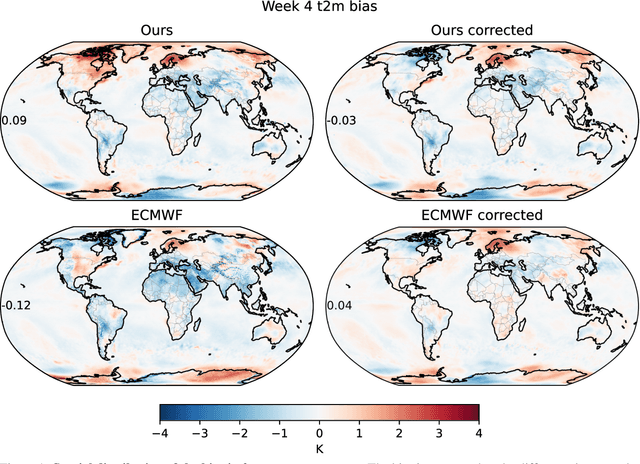
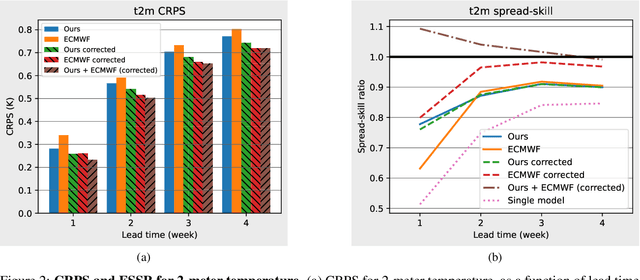

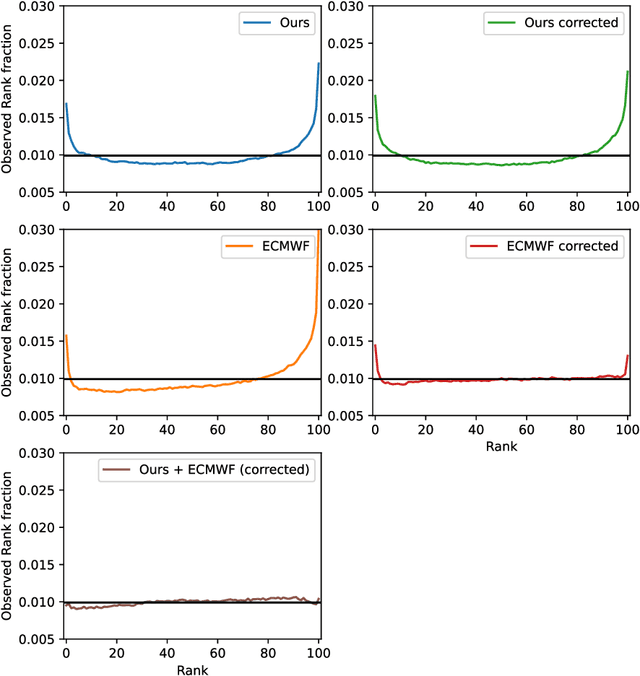
Abstract:We present an operations-ready multi-model ensemble weather forecasting system which uses hybrid data-driven weather prediction models coupled with the European Centre for Medium-range Weather Forecasts (ECMWF) ocean model to predict global weather at 1-degree resolution for 4 weeks of lead time. For predictions of 2-meter temperature, our ensemble on average outperforms the raw ECMWF extended-range ensemble by 4-17%, depending on the lead time. However, after applying statistical bias corrections, the ECMWF ensemble is about 3% better at 4 weeks. For other surface parameters, our ensemble is also within a few percentage points of ECMWF's ensemble. We demonstrate that it is possible to achieve near-state-of-the-art subseasonal-to-seasonal forecasts using a multi-model ensembling approach with data-driven weather prediction models.
DeepSpeed4Science Initiative: Enabling Large-Scale Scientific Discovery through Sophisticated AI System Technologies
Oct 11, 2023



Abstract:In the upcoming decade, deep learning may revolutionize the natural sciences, enhancing our capacity to model and predict natural occurrences. This could herald a new era of scientific exploration, bringing significant advancements across sectors from drug development to renewable energy. To answer this call, we present DeepSpeed4Science initiative (deepspeed4science.ai) which aims to build unique capabilities through AI system technology innovations to help domain experts to unlock today's biggest science mysteries. By leveraging DeepSpeed's current technology pillars (training, inference and compression) as base technology enablers, DeepSpeed4Science will create a new set of AI system technologies tailored for accelerating scientific discoveries by addressing their unique complexity beyond the common technical approaches used for accelerating generic large language models (LLMs). In this paper, we showcase the early progress we made with DeepSpeed4Science in addressing two of the critical system challenges in structural biology research.
Super-resolution Probabilistic Rain Prediction from Satellite Data Using 3D U-Nets and EarthFormers
Dec 06, 2022



Abstract:Accurate and timely rain prediction is crucial for decision making and is also a challenging task. This paper presents a solution which won the 2 nd prize in the Weather4cast 2022 NeurIPS competition using 3D U-Nets and EarthFormers for 8-hour probabilistic rain prediction based on multi-band satellite images. The spatial context effect of the input satellite image has been deeply explored and optimal context range has been found. Based on the imbalanced rain distribution, we trained multiple models with different loss functions. To further improve the model performance, multi-model ensemble and threshold optimization were used to produce the final probabilistic rain prediction. Experiment results and leaderboard scores demonstrate that optimal spatial context, combined loss function, multi-model ensemble, and threshold optimization all provide modest model gain. A permutation test was used to analyze the effect of each satellite band on rain prediction, and results show that satellite bands signifying cloudtop phase (8.7 um) and cloud-top height (10.8 and 13.4 um) are the best predictors for rain prediction. The source code is available at https://github.com/bugsuse/weather4cast-2022-stage2.
MS-nowcasting: Operational Precipitation Nowcasting with Convolutional LSTMs at Microsoft Weather
Nov 18, 2021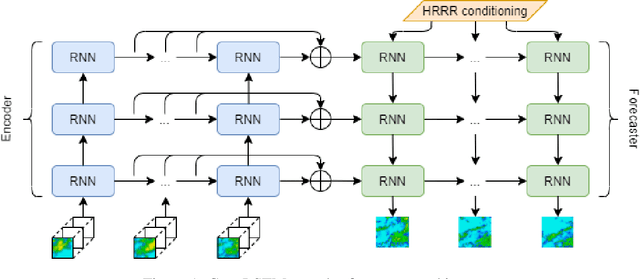

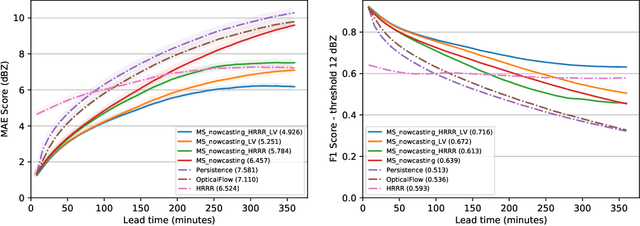

Abstract:We present the encoder-forecaster convolutional long short-term memory (LSTM) deep-learning model that powers Microsoft Weather's operational precipitation nowcasting product. This model takes as input a sequence of weather radar mosaics and deterministically predicts future radar reflectivity at lead times up to 6 hours. By stacking a large input receptive field along the feature dimension and conditioning the model's forecaster with predictions from the physics-based High Resolution Rapid Refresh (HRRR) model, we are able to outperform optical flow and HRRR baselines by 20-25% on multiple metrics averaged over all lead times.
Machine Learning at Microsoft with ML .NET
May 15, 2019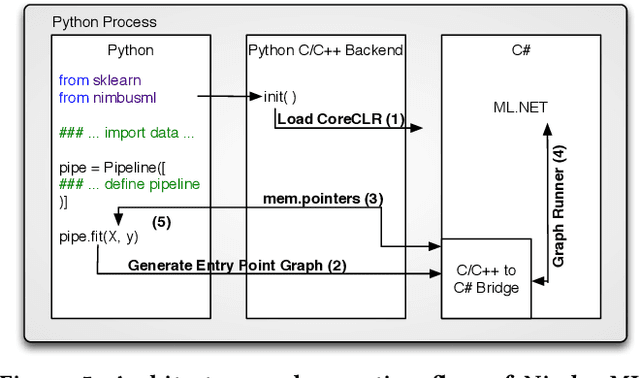
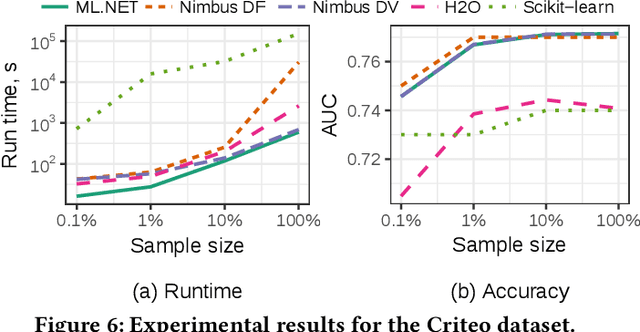
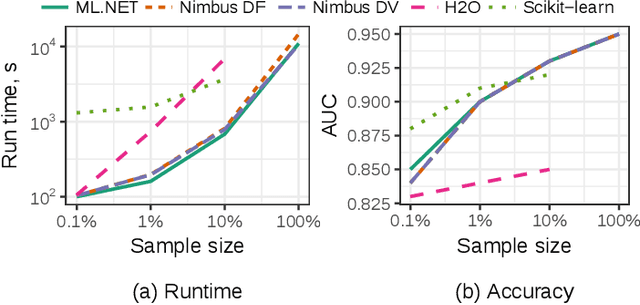
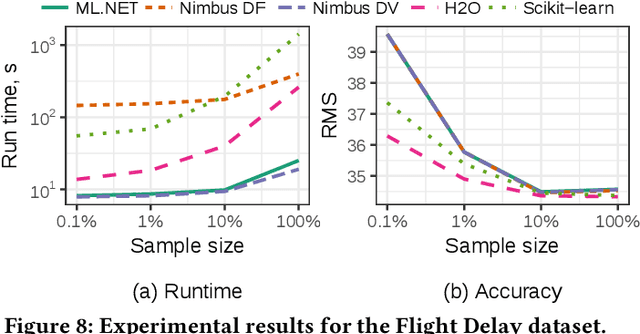
Abstract:Machine Learning is transitioning from an art and science into a technology available to every developer. In the near future, every application on every platform will incorporate trained models to encode data-based decisions that would be impossible for developers to author. This presents a significant engineering challenge, since currently data science and modeling are largely decoupled from standard software development processes. This separation makes incorporating machine learning capabilities inside applications unnecessarily costly and difficult, and furthermore discourage developers from embracing ML in first place. In this paper we present ML .NET, a framework developed at Microsoft over the last decade in response to the challenge of making it easy to ship machine learning models in large software applications. We present its architecture, and illuminate the application demands that shaped it. Specifically, we introduce DataView, the core data abstraction of ML .NET which allows it to capture full predictive pipelines efficiently and consistently across training and inference lifecycles. We close the paper with a surprisingly favorable performance study of ML .NET compared to more recent entrants, and a discussion of some lessons learned.
 Add to Chrome
Add to Chrome Add to Firefox
Add to Firefox Add to Edge
Add to Edge